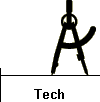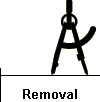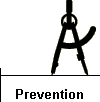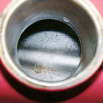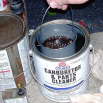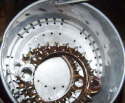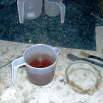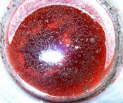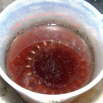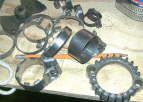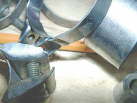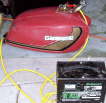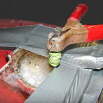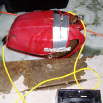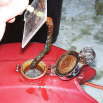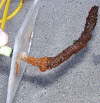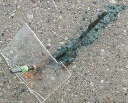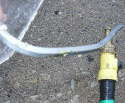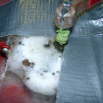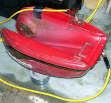|
How to do it:
Assuming you are using a plastic, or non-conductive bucket, mix a solution of 1 to 2 tablespoons of soda per gallon of water (1/3 to 1/2 cup laundry soda in a 5 gallon bucket). Mix well so all soda is dissolved.
Clean the electrodes so they aren't too rusty - especially at the top ends - they need to make good electrical contact. I take mine to a wire wheel on my grinder and give them just a real quick going over. Place electrodes in bucket, around sides, so clean, rust free ends stick up above bucket. Use wire, clamps, or some means to hold them in place, so that they cannot move freely, or fall into center of bucket. They must NOT EVER touch part to be cleaned, which will be suspended in center of bucket. I use small C clamps. Whatever you use, it shouldn't be copper, and will get a bit messy if it gets into your cleaning solution.
Tie the electrodes together with wire, or cables. I use copper wire twisted around the top ends, and have used old jumper cables. All electrodes need to be tied together "electrically".
Suspend part to be cleaned into bucket so it hangs in the middle, not touching bottom, and not touching electrodes. I place a piece of rerod across top of bucket (see photo below) and bolt a small piece of chain to my part to be cleaned, and clamp the chain on the rod so that the chain hangs from the rod, and suspends the part into solution below.
Attach battery charger - place NEGATIVE LEAD (this is most critical!!!) on rod, or metal that piece to clean is suspended from. Somehow, your negative, or BLACK charger lead needs to connect to the part.
Attach POSITIVE, or RED lead of charger to electrode "grid" formed when you placed electrodes, or rods, into bucket and tied them all together.
Make sure electrodes and part to be cleaned are not touching, turn on charger. You should within seconds see a lot of tiny bubbles rising from the part suspended in the mixture. Do not do this inside, or in a closed area - those bubbles are the componant parts of water - H2O - Hydrogen and Oxygen. Remember the Hindenburg?
See below how the rust and bubbles are attracted to the electrodes? You will need to clean them from time to time - they will get very covered with gunk, and in fact, after many uses, will have eroded down and need to be replaced. That is why I use rerod - it's easy to get, cheap, and most of all - SAFE FOR YOU (unless you attempt to eat it) and your environment! No nasty elements such as stainless steel would have. You can pour the waste solution on the lawn and it won't hurt it. Do watch out for ornamental shrubs which may not like iron rich soil, however. No use making your spouse mad!
This could all also be done on a larger scale - get plastic chemical barrels, cut out the top, and you can make a 15 or even 30 gallon cleaning tank - simply use longer electrodes (another advantage of using rerod). you may also need to use MORE electrodes with larger parts and a larger "tank".
|

